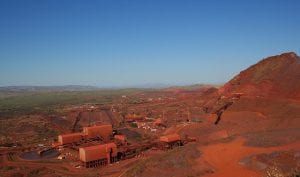Major retailers and other groups have voiced strong concerns about one of the key design pillars of the proposed national energy guarantee (NEG), saying that it risks squeezing out competition, reducing market liquidity and visibility, and pushing up prices.
The NEG is being sold by the Coalition government and the members of the Energy Security Board as a means of combining climate and energy policy, and reducing prices, by introducing obligations on retailers to meet emissions and reliability targets.
But how this should, or could, be done is the big question.
Since it was unveiled last year, it has been criticised widely – for its enormous complexity, its dodging of actual policies on emissions reductions, and the threat of cementing the market power of the large players that already dominate Australia’s electricity market, at a huge cost to consumers.
And at a public forum in Sydney on Monday, and via a webinar, even those big retailers, and many others, expressed their concern that reduced competition and higher prices would be the result of the NEG without significant design changes.
It shattered the illusion that federal energy minister Josh Frydenberg has sought to create about the “wide support” of industry to the proposed NEG. In reality, there are deep and profound concerns about how, or if, it could work.
Origin Energy’s Tim O’Grady said the proposed reliance on contracts to meet obligations was problematic.
“It is not clear how the incentive for retailers will lead to more efficient outcomes …. it may reduce liquidity in competitive markets,” he said.
That wasn’t all. Origin, which intends to close its last coal generator in 2032, said the electricity sector could “manage more” than the “pro-rata” allocation of only 26 per cent decided by the federal government.
They, of course, are not the only ones to think so. And the Australian Energy Market Operator, just in case there is a change of policy some time in the future, is canvassing how it would incorporate emissions reductions of more than 50 per cent by 2030.
Origin’s assessment of liquidity and the risk of the NEG pushing prices up, rather than down as claimed by the government and the ESB, was echoed by nearly all the industry participants invited to make short presentations at the open forum.
Australians are currently paying ridiculously high prices for their electricity and half of these costs come from the gold plating of the grid, and the excessive spending on poles, wires and other equipment to meet just a few hours of peak demand.
There are now fears that this will be repeated in the generation sector through the reliability obligation, and the need to rely on forecasts made 5-10 years in advance.
“We are concerned that we will end up with a gold-plated market solution in the same way we ended up with a gold-plated network,” said the Energy Users Association, adding that the reliability guarantee could impose “significant” barriers to entry to new retailers and competition.
Andrew McGrath, from Macquarie Group, a major player in energy markets, was one of many to talk of “unintended consequences”, saying the proposed policy design could raise barriers to smaller competitors and retailers.
Power retailer ERM, which focuses on the business and industrial markets, said the proposed use of contracts was “complicated” and could remove visibility and price transparency. “We see a big risk of higher costs.”
Renewable energy retailer Powershop said the contracts mechanism, if poorly designed, would “wipe out competition”, and said the government should be setting “very ambitious emissions reduction targets.”
Energy Consumers Australia said “it is no longer enough to marvel at the wonders of markets and market design. Consumers expect the mechanism to deliver lower bills.”
Engie and its retail arm Simply Energy also echoed the fear that the NEG was “too complicated” and may only serve to give jobs to an “army of bureaucrats”.
It suggested the “mechanisms discussed in recent years would be easier to use,” and noted that some types of capacity were favoured for “political reasons” and not their system attributes.
Others simply talked their books: Snowy Hydro wanted only “synchronous” generation to count for the reliability target (i.e. their much touted Snowy 2.0 pumped hydro mega-scheme, and other pumped hydro, rather than battery storage).
See this story on inertia, or this one, for a counter view.
The Minerals Council worried about the future of “baseload” and 24/7 power (i.e. coal).
The MCA was represented by Patrick Gibbons, the former policy advisor to environment minister Greg Hunt whose government tore down a perfectly reasonable policy, the Labor/Greens carbon price, and tried to tear down the renewable energy target along with it.
That would help explain the intervention of the student protestors.
Jeff Renaud, from EnerNoc, said demand response – rather than new energy supply – could serve to match 5-10 per cent of peak demand, or even more if technologies like “behind the meter” battery storage were included.
But he said the ability to do so would depend on other mechanisms that needed to be introduced, and expressed his frustration in this process, and how it could be incorporated into the NEG design settings.
Jeff Dimery, from Alinta, wondered why the NEG only applied to the National Electricity Market, which meant that all of Western Australia and the Northern Territory, including (presumably) the huge solar-rich Pilbara area, could not contribute to the target.
Kane Thornton from the Clean Energy Council also opposed the government’s idea of using international offsets to help meet the emissions guarantee, saying every megawatt-hour of reliability and emissions should be sourced within Australia.
“It is a very complex piece of policy architecture,” Thornton said. “I think we need to keep front of mind that this level of complexity risks unintended consequences.”









